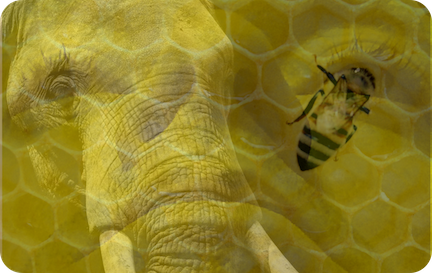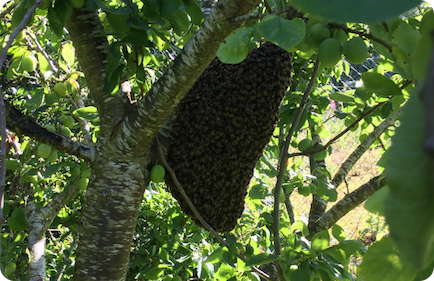Supersense
A trained nose
I’ve been interested in olfaction for some time but I really got hooked when I started doing character research for a project I am working on, a novel with the working title Broken Ladder. I was looking for a way to differentiate a group of characters, one of whom plays a large part in the book. I wanted to attribute to him extraordinary abilities, but I didn’t want to give him super powers in the traditional sense.
These skills had to be gained through diligent practice rather than vicariously inherited or derived through a happy accident. With an emphasis on the effort required to obtain the skill I needed to keep the trait believable, but I also wanted it to be almost superhuman. X-ray eyes were out and super sense was in, specifically smell, or rather olfaction. So what is so special about our nasal faculties?

The science bit…
Volatile odours such as cloves (Eugenia) or the smell of soil after a rain shower (geosmin) enter the nose during inhalation. There they activate receptors in the olfactory epithelium located behind each nostril, leading to a series of reactions that are interpreted by the olfactory bulb located at the base (inferior side) of the forebrain.
There are two prevailing theories underpinning the science of olfaction. One is based on the so-called lock and key model where the shape of odourant molecule activates specific receptors in the lining of the nose. There is however an anomaly in this hypothesis, in that some almost identical molecules can smell completely different. This is where the second theory comes in. Derek Lowe describes the the vibrational theory of olfaction (VTO) as a mechanism in which at least some receptors sense the vibrational levels of functional groups, which involves electron tunnelling, a feature of quantum mechanics.1
In Colleen Walsh’s article in The Harvard Gazette she writes about the work of Dawn Goldman which tells us the sense of smell begins before birth and is the only fully developed sense in the fetus. It is also closely linked to memory. According to Harvard’s Venkatesh Murthy from the same article:
Smells are handled by the olfactory bulb, the structure in the front of the brain that sends information to the other areas of the body’s central command for further processing. Odors take a direct route to the limbic system, including the amygdala and the hippocampus, the regions related to emotion and memory. “The olfactory signals very quickly get to the limbic system,”
The smell of fear
If a visceral response to certain odours can emerge in early childhood and even before birth, what about the ability to pass on this trait through the generations? Research has shown that the fear of a particular smell can in fact be inherited. In a study of male mice where a particular odour (acetophenone or cherry blossom) is associated with receiving an electric shock, this fear was shown to be experienced in the mice’s pups and grandpups, even if these mice never smelled the odour before in their lives. The question has been asked if this transgenerational epigenetic 2 effect could help explain neuropshciatric and metabolic disorders in humans. Olfaction clearly shows potential for long lasting effects.
Nature’s other noses
Other species can offer inspiration in terms of a variety of olfactory systems serving alternative examples to embellish the human sense. Elephants, possessing the largest number of olfactory receptor (OR) genes, have been shown to detect different amounts in the source of an odour. They can even differentiate between 150 and 180 sunflower seeds, by scent alone, something that’s not easy to do by sight for humans.
The honeybee provides another interesting case study as a species that ‘sees’ using smell. I plan to revisit some these concepts in later posts. Edit: This post was delayed as I had to rescue a swarm from a plum tree near the apiary yesterday evening (I keep bees). Swarming is a phenomenon whereby the queen bee leaves the hive with a large cohort of worker bees with the intention of seeking out a new location to establish a colony. The beard-like bunch of bees in the photograph are the wanderlust colony, a superorganism held together by a unifying pheromone emitted by the queen bee.

Healthy smell
An early diagnostic test for Alzheimer’s disease looks at how patients detect the smell of peanut butter—characterised by a large variation in detection between the left and night nostril. One of the characteristic symptoms of COVID-19 sufferers is loss of the sense of smell, usually short term, but sometimes persisting for much longer. Although we have moved on from the miasmic theory of infectious disease the loss of odour detection with illness is perhaps an even more petrifying concept.
While there is still debate about the workings of olfaction it is true to say that our most ancient sense, steeped in intrigue, remains filled with speculation. It is full of potential for works of fiction, providing ample material to fill gaps in knowledge with good old-fashioned conjecture. Olfaction has high cultural significance, a Proustian power of evocation and retains an important relationship with health and disease. It offers writers a multi dimensional array populated with fascinating experiences to draw from.
-
The branch of mechanics that deals with the mathematical description of the motion and interaction of subatomic particles, incorporating the concepts of quantization of energy, wave–particle duality, the uncertainty principle, and the correspondence principle. ↩
-
Relating to or arising from non-genetic influences on gene expression. ↩
writing science nature bees